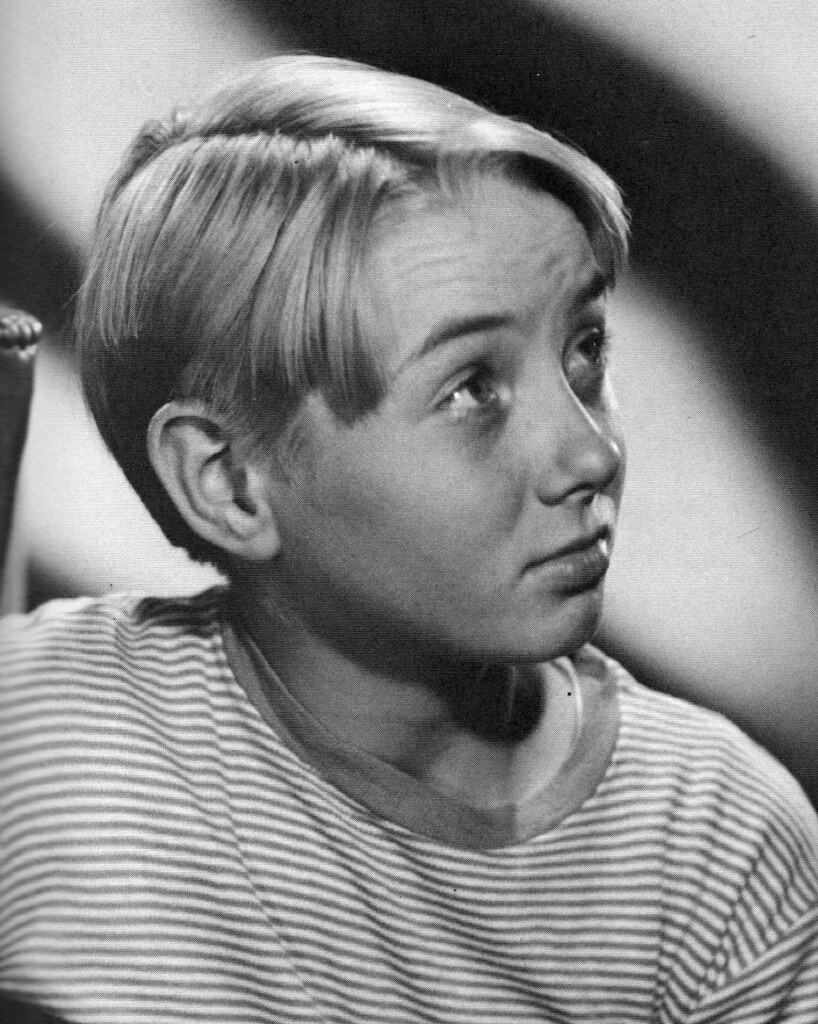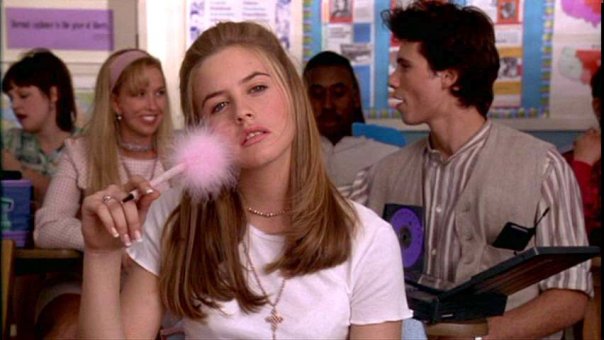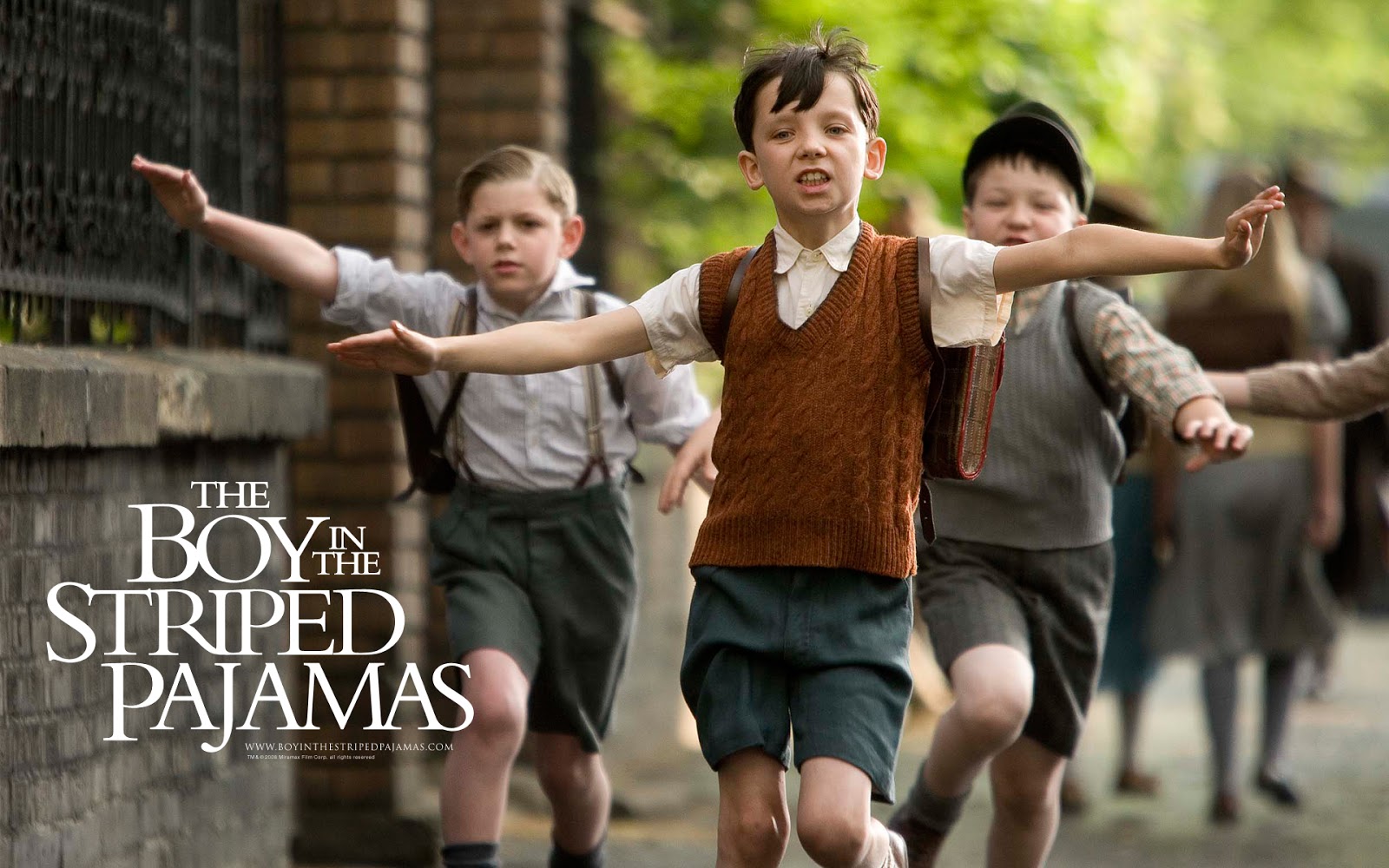
Claude Jarman Jr., a name that once resonated with the poignant innocence of childhood on the silver screen, departed on January 12, 2025, at the age of 90. His passing marked the end of a remarkable life, one that transcended the fleeting allure of early Hollywood stardom to embrace diverse roles as a cultural leader, author, and patriarch. Jarman’s journey began with a chance encounter that plucked him from a Nashville classroom into the heart of the Golden Age of Hollywood, forever imprinting his gentle face and blue eyes into cinematic history.
His career, though relatively brief in front of the camera, left an indelible mark, particularly his unforgettable portrayal of Jody Baxter in the 1946 Metro-Goldwyn-Mayer classic, “The Yearling.” This role not only garnered him critical acclaim and a special Academy Award but also cemented his place as one of the era’s most beloved child stars. Yet, Jarman’s story is not merely one of youthful fame; it is a narrative of conscious choices, a deep connection to his Southern roots, and an eventual, profound contribution to the world of film from behind the scenes.
As we reflect on his nine decades, it becomes clear that Claude Jarman Jr. navigated the unique challenges of child stardom with an uncommon grace and humility. His experiences offered a rare glimpse into the inner workings of a bygone studio system, shaping a man who, despite his early success, remained steadfastly grounded, cherishing peace of mind above all else. His legacy is a testament to the enduring power of storytelling, both on screen and in the quiet resolve of a life well-lived.

1. **The Defining Role: Jody Baxter in ‘The Yearling’**Claude Jarman Jr.’s entry into the annals of cinematic history was indelibly linked to his portrayal of Jody Baxter in the 1946 Metro-Goldwyn-Mayer classic, “The Yearling.” Adapted from Marjorie Kinnan Rawlings’ Pulitzer Prize-winning 1939 novel, the film presented a deeply emotional narrative of a lonely boy living on a Florida farm in 1878 who befriends an orphaned fawn named Flag. Jarman, with his “angel face, blond hair and bright blue eyes,” brought a profound vulnerability and authenticity to the character that captivated audiences and critics alike, making the film “an emotional experience seldom equaled.”
The production of “The Yearling” was an extensive undertaking, famously taking “about two years in Florida to finish the movie.” This prolonged period allowed Jarman to fully immerse himself in the role, navigating the challenging demands of working with animals. One particularly notable instance involved a single shot with a deer that “needed 115 takes to get on film,” underscoring the dedication and patience required of the young actor.
His performance opposite seasoned stars Gregory Peck and Jane Wyman, who played his parents, solidified the film’s reputation as a timeless tearjerker, drawing comparisons to later iconic animal films like “Old Yeller.” The emotional resonance of Jarman’s portrayal of Jody, a boy forced to confront the harsh realities of nature and the painful decisions that come with it, left a lasting impression. Frank Sinatra, a titan of entertainment, famously recognized Jarman in a restaurant years later, remarking that he was the boy who “made everybody cry.”

2. **A Child Star’s Triumph: The Juvenile Academy Award**The extraordinary impact of Claude Jarman Jr.’s performance in “The Yearling” was formally recognized with one of Hollywood’s most prestigious honors: a Juvenile Academy Award. Presented at the 19th Academy Awards ceremony in 1947, this special miniature trophy was a testament to his “heart-tugging performance” and positioned him among a select group of young talents. Shirley Temple, herself the first recipient of the award 12 years prior and arguably the most famous child star in the world, had the honor of presenting the statuette to a then 13-year-old Jarman at the Shrine Auditorium in Los Angeles.
Jarman was only the seventh youngster to receive this unique honor, placing him in an elite category of child actors whose contributions were deemed exceptional enough for special recognition by the Academy. Upon accepting the award, the young actor’s humility and gratitude were evident. He stood before the microphone and simply said, “Thank you.” He further expressed, “This is about the most exciting thing that can happen to anybody,” before extending his thanks to Metro-Goldwyn-Mayer, producer Sidney Franklin, director Clarence Brown, and studio mentor Miss Lillian Burns, concluding with a heartfelt, “And to all of you for liking me. I’m very proud and grateful.”
Interestingly, the story of his Academy Award continued years later. Jarman’s daughter, Natalie, recalled her father’s intrigue upon seeing Shirley Temple’s two Oscars—one the smaller Juvenile award, and the other a full-sized statuette—displayed on her piano. Inspired, Jarman called Temple, who explained that he merely needed to ask the Academy for a regular-sized Oscar. True to form, “One day we came home and there was a box sitting on the front porch,” containing the larger trophy. Jarman proudly displayed both in his home, a poignant reminder of his singular achievement and the evolving recognition of child actors’ contributions.

3. **The Unconventional Discovery: From Nashville Classroom to Hollywood**Claude Jarman Jr.’s entry into the glamorous, yet often unpredictable, world of Hollywood was not through traditional auditions but via a serendipitous discovery in his fifth-grade classroom. Born on September 27, 1934, in Nashville, Tennessee, the son of a railroad accountant, Jarman was an ordinary boy with an “angel face, blond hair and bright blue eyes” who acted in school plays. His life took an extraordinary turn on Valentine’s Day 1945, when Metro-Goldwyn-Mayer director Clarence Brown, actively scouting for a boy to play Jody in “The Yearling,” “randomly visit[ed] schools in the South.”
Brown’s extensive talent search brought him to Eakin Elementary School in Nashville, where he “spotted fifth-grader Claude in a fifth-grade classroom.” This direct, almost fabled method of casting was characteristic of the studio system’s exhaustive approach to finding the perfect fit for key roles. Jarman recounted the swift turn of events in a 2016 interview, stating, “Next thing, they called three days later and said, ‘Get ready to leave for Hollywood in a week.'” This rapid transition from a quiet Southern upbringing to the bustling film capital underscores the dramatic shift that awaited the 10-year-old.
The director, Clarence Brown, who would later reteam with Jarman on “Intruder in the Dust,” took a personal interest in nurturing his young discovery. He “worked for two years teaching him how to deliver dialogue and emote on screen,” a testament to Brown’s commitment and the studio’s investment in Jarman’s potential. This hands-on mentorship facilitated Jarman’s transformation from a local Nashville boy into a convincing screen presence, laying the foundation for his acclaimed performance and a nascent career that blossomed from this singular, pivotal encounter.

4. **MGM Studio School: Classmates and Early Hollywood Education**For Claude Jarman Jr., Hollywood was not just a workplace but also a schoolroom. As a child actor under contract with Metro-Goldwyn-Mayer, his education continued on the studio lot, a common practice for young performers during the Golden Age of Hollywood. This unique educational setting placed him among a cohort of other aspiring and established child stars, offering a singular experience far removed from a conventional public school.
This environment, at MGM’s “two-room school house,” fostered a camaraderie unique to the studio system, where young actors learned their craft, maintained their studies, and grew up together under the watchful eyes of studio educators. His classmates constituted a veritable who’s who of young talent, including names that would resonate throughout cinematic history: Elizabeth Taylor, Dean Stockwell, Margaret O’Brien, and Jane Powell. Even while making “Roughshod” at RKO, he and Natalie Wood, another prominent child star, “studied together,” highlighting the interconnectedness of these young careers.
This shared educational experience not only provided academic instruction but also offered a semblance of normalcy and peer interaction in lives that were anything but ordinary. It was a space where the pressures of fame could be momentarily set aside for the routines of learning, albeit in an exceptional context. Jarman’s time at the MGM studio school underscored the comprehensive, albeit often insular, world that child actors inhabited, preparing them for both their roles on screen and the complexities of growing up in the spotlight.

5. **Breaking Barriers: ‘Intruder in the Dust’ and its Significance**Beyond his initial heartwarming success in ‘The Yearling,’ Claude Jarman Jr. took on a significantly more challenging and socially resonant role in the 1949 film ‘Intruder in the Dust.’ This Metro-Goldwyn-Mayer production, re-teaming him with director Clarence Brown, was an adaptation of William Faulkner’s novel and marked a crucial moment in Hollywood’s engagement with civil rights. Jarman starred as Chick Mallison, a “youngster out to prove the innocence of a Black man,” grappling with themes of racism and segregation in the American South.
The film was notably shot in Oxford, Mississippi, giving it an authentic backdrop for its powerful narrative. What distinguished ‘Intruder in the Dust’ was its unusually forthright approach to racial issues, particularly for a Hollywood film of that era. It “tackled the subject of racism and segregation in the southern states in an unusually open way.” This candid portrayal, often lauded for its “positive portrayals of Black characters,” represented a bold step for a major studio, challenging prevailing cinematic norms and contributing to a broader public discourse on civil rights at a time when such discussions were largely taboo on screen.
Jarman’s role in this groundbreaking film showcased his developing acting range and his participation in a project that carried significant social weight. His character’s journey of questioning and seeking justice provided a focal point for the film’s message, drawing audiences into a narrative that was both deeply personal and universally relevant. ‘Intruder in the Dust’ remains a significant entry in his filmography, highlighting not just his acting abilities but also his involvement in a motion picture that bravely confronted America’s racial prejudices, earning critical praise for its moral conviction and narrative strength.

6. **Riding with Legends: ‘Rio Grande’ Alongside John Wayne**In 1950, Claude Jarman Jr. once again found himself in a prominent supporting role alongside one of Hollywood’s towering figures, this time starring with John Wayne in John Ford’s iconic Western, “Rio Grande.” This film, a classic of the genre, placed Jarman in the role of Trooper Jefferson “Jeff” Yorke, the son of Wayne’s character, cavalry officer Captain Kirby Yorke. The dynamic between father and son, particularly against the rugged backdrop of the American frontier, added a compelling layer to the film’s exploration of duty, family, and conflict.
For Jarman, working on “Rio Grande” presented unique opportunities and challenges, not least of which was the requirement to learn specific equestrian skills. The young actor “learned roman riding for the role,” demonstrating his commitment to authenticity and his readiness to master new skills for his craft. This experience further expanded his versatility as an actor, moving from the pastoral drama of “The Yearling” and the social commentary of “Intruder in the Dust” to the action-packed world of the Western, a genre that held immense popularity during his active years.
His presence in a John Ford-directed, John Wayne-starring Western solidified Jarman’s status as a working actor capable of holding his own alongside industry legends. The film, which also featured Maureen O’Hara, provided him with a platform to continue his screen career, showcasing a more mature performance than his child star days. This role in “Rio Grande” became another significant credit in his evolving filmography, demonstrating his ability to adapt to diverse cinematic environments and contribute to acclaimed productions.

7. **The Final Survivor: An Iconic MGM Anniversary Photo**Among the many unique experiences in Claude Jarman Jr.’s early career, one particular moment stands as a poignant historical marker: his inclusion in a famous photograph commemorating Metro-Goldwyn-Mayer’s 25th anniversary. In April 1949, at the height of the studio system, Jarman appeared alongside “more than four dozen MGM stars” in an iconic photo session designed to celebrate the studio’s quarter-century milestone. This gathering brought together a constellation of Hollywood’s brightest luminaries, encapsulating an era of unparalleled cinematic glamour and power.
The photograph itself was a remarkable assembly of talent, featuring legendary names such as Spencer Tracy, Clark Gable, Vivien Leigh, Angela Lansbury, Errol Flynn, Esther Williams, Judy Garland, and even Lassie. Jarman, still a young actor, found himself in this esteemed company, a testament to his burgeoning career and his value to the studio. The image captured a moment in time when MGM was a dominant force, its roster of stars representing the pinnacle of motion picture artistry and public fascination.
Decades later, this photograph would gain an added layer of historical significance. At the time of his passing on January 12, 2025, Claude Jarman Jr. was recognized as “the last surviving person from that iconic shot.” This fact underscores not only his longevity but also his enduring connection to an era that profoundly shaped American culture. His life, spanning the vast majority of the 20th century and into the 21st, served as a living link to the “Golden Age of Hollywood,” making his passing a moment for reflection on a bygone era of cinematic grandeur and the individuals who defined it.

8. **A Return to Roots: Education and Emerging Adulthood**Following a captivating, albeit brief, immersion in the golden age of Hollywood, Claude Jarman Jr. made a deliberate choice to step away from the relentless spotlight. In 1950, he returned to Nashville, Tennessee, the city of his birth and early upbringing, to complete his high school education. This decision marked a pivotal moment, signaling his desire for a more conventional pathway after the extraordinary experiences of child stardom. Despite this shift, his connection to the screen was not immediately severed; he appeared in films such as ‘Hangman’s Knot’ in 1952, starring alongside Randolph Scott, Donna Reed, and Lee Marvin, and ‘The Great Locomotive Chase’ in 1956.
His commitment to higher education saw him enroll at Vanderbilt University, where he pursued studies in history. This period of academic focus provided a stark contrast to the studio classrooms of MGM, allowing him to engage with intellectual pursuits and solidify his foundational knowledge. His daughter, Natalie, later affirmed the profound attachment he held for his hometown, stating that “Nashville was his heart,” a sentiment that profoundly shaped his identity throughout his life.
Indeed, Jarman embodied the essence of a “true Southern gentleman,” as described by those close to him. His well-mannered demeanor, soft-spoken nature, and subtle Southern drawl accompanied a physical presence that remained undeniably charismatic. He graduated from Vanderbilt in 1956, having navigated the complexities of transitioning from an internationally recognized child actor to a grounded young man, preparing for a future that would encompass diverse professional and personal endeavors far from the soundstages of Hollywood.

9. **Service to Nation: The U.S. Navy and Public Relations**Upon completing his university studies, Claude Jarman Jr. embarked on a period of distinguished public service, enlisting in the U.S. Navy. For three years, he served as a Naval officer, a testament to his commitment beyond the entertainment industry. This chapter of his life took him across the country, with postings in key locations such as Rhode Island, Seattle, and Los Angeles, providing him with a broader perspective and experience outside the confines of filmmaking.
During his tenure in the Navy, Jarman leveraged his unique background in the film industry by working in public relations. His role involved collaborating directly with Hollywood studios, facilitating the creation of films that highlighted the Navy’s operations and personnel. This position allowed him to bridge his past experiences with his present duties, employing his understanding of cinematic storytelling for patriotic purposes.
This experience in public relations within the armed forces further refined his skills in communication and organizational leadership, attributes that would prove invaluable in his subsequent career transitions. It underscored his versatility and ability to adapt his talents to various sectors, demonstrating a trajectory that moved steadily from performing in front of the camera to influencing narratives from behind the scenes.
Read more about: The Final Kill: An In-Depth Look at the F-16’s Historic Hunt for a MiG-29 Over Serbia

10. **Elevating Cinema: The San Francisco International Film Festival**In 1963, Claude Jarman Jr. relocated to San Francisco, marking the beginning of a significant new chapter in his professional life, initially working for the John Hancock Insurance Company. However, it was his growing involvement with the San Francisco International Film Festival (SFIFF) that would truly define his post-acting career. By 1965, he was asked to lead the festival, a role he embraced with passion and dedication for 15 influential years, through 1980.
Under Jarman’s executive directorship, the SFIFF flourished, transforming into a globally renowned event. He was celebrated for his meticulous approach, particularly his commitment to organizing in-depth retrospectives of acclaimed movie stars and directors. This curatorial vision not only attracted significant industry attention but also enriched the cultural landscape of the Bay Area, fostering a deeper appreciation for cinematic art.
His remarkable contributions were later recognized in 2019 when he received the festival’s George Gund III Craft of Cinema Award. The citation praised his ability to “elegantly leverag[e] his success as a young actor to promote the art of film, bringing together the industry and Bay Area community in ways that reverberate to this day.” He famously possessed a knack for attracting prominent figures to the festival, despite his personal aversion to self-promotion, illustrating his profound dedication to the art form.
The SFIFF, under Jarman’s guidance, became a vibrant hub of cinematic activity and social interaction. His daughter, Natalie, recalled vivid memories of parties hosted at their home, where international luminaries like director François Truffaut, and actors Catherine Deneuve and Liv Ullman, mingled with figures such as Jacqueline Bisset, O.J. Simpson, and author Sidney Sheldon. These gatherings underscored the festival’s stature and Jarman’s pivotal role in creating a dynamic and engaging environment for film enthusiasts and professionals alike.

11. **Cultural Stewardship and Entrepreneurial Ventures**Beyond his transformative leadership of the San Francisco International Film Festival, Claude Jarman Jr. extended his influence into broader cultural stewardship within the city. He served with distinction as the director of cultural affairs for the City of San Francisco, a role that positioned him at the heart of the city’s artistic and institutional life. This appointment further underscored his deep commitment to the arts and his proven capability in organizational leadership.
His engagement with San Francisco’s cultural institutions also included serving as the managing director of the War Memorial Opera House during the 1970s, a period when he was simultaneously active in running the SFIFF. These multifaceted roles demonstrated his capacity to manage complex cultural organizations and to contribute significantly to the city’s vibrant arts scene from an administrative perspective.
Jarman also ventured into the corporate world, showcasing his versatility and business acumen. Following his initial work with John Hancock Insurance, he was recruited by Shaklee Corporation in 1979, where he served as Vice President of Corporate Communications. This move highlighted his skill in strategic communication, a talent honed through his diverse experiences. Later, in 1986, he founded Jarman Travel Inc., establishing his own enterprise to cater to the travel needs of corporations and executives, embodying an entrepreneurial spirit that defined much of his post-Hollywood career.
Read more about: Joshua Abram’s Enduring Legacy: How a Visionary Reshaped Workspace, Advertising, and Fertility Care

12. **Behind the Lens: Documentary Production**While Claude Jarman Jr. largely transitioned away from acting, his passion for film endured, manifesting in new creative endeavors behind the camera. A notable aspect of this shift was his foray into documentary production, where he could shape narratives and explore subjects of cultural significance from a different vantage point. This move allowed him to contribute to the cinematic landscape without being the subject of the camera’s gaze.
In 1972, Jarman took on the role of executive producer for the music documentary film ‘Fillmore.’ This acclaimed production chronicled the iconic Fillmore Auditorium and the legendary rock impresario Bill Graham, capturing a pivotal moment in music history. The documentary offered a backstage look at the era’s vibrant concert scene, further illustrating Jarman’s interest in cultural phenomena and his ability to bring compelling stories to the screen through a new medium.
His involvement in ‘Fillmore’ demonstrated a keen understanding of cinematic storytelling and an appreciation for subjects outside the traditional Hollywood studio system. It underscored his evolution from a child star performing in studio dramas and westerns to a cultural facilitator and producer, actively contributing to the preservation and presentation of diverse artistic expressions.

13. **A Brief Return to the Screen and Enduring Oscar Ties**Despite his stated preference for life away from the acting spotlight, Claude Jarman Jr. made a singular return to the screen in the late 1970s. This was not a full-fledged comeback but a brief, notable appearance in the highly rated NBC miniseries ‘Centennial’ (1978-1979), where he portrayed the character of Earl Grebe. This role, nearly two decades after his last film appearance in ‘The Great Locomotive Chase’ and his earlier TV appearances, served as a final on-screen credit, a quiet bookend to his acting career.
Even after his formal retirement from acting, Jarman maintained a cherished connection with the Academy of Motion Picture Arts and Sciences. His legacy as a Juvenile Academy Award winner ensured he remained a respected figure within the film community. He was invited back to the Oscars stage not as a nominee, but as a special guest, participating in the ‘Oscar Family Album’ retrospectives at both the 70th and 75th Academy Award telecasts in 1998 and 2003, respectively.
These appearances were poignant reminders of his significant early achievement and his enduring place in Hollywood history. They offered a unique opportunity for audiences to reconnect with the boy who had captivated millions, now a distinguished elder statesman of film, demonstrating that while his acting career was brief, its impact and the honors it garnered continued to resonate for decades.
Read more about: Beyond the Limelight: How 13 Stars Navigated the Unspeakable Tragedy of a Family Member’s Murder

14. **Reflections and Legacy: Authoring a Memoir**In the later years of his life, Claude Jarman Jr. embarked on an introspective journey, culminating in the publication of his memoir, ‘My Life and the Final Days of Hollywood,’ in 2018. This book offered a rare, personal account of his unique experiences, from his serendipitous discovery and meteoric rise as a child star during Hollywood’s Golden Age to his conscious decision to forge a path beyond the glare of celebrity. It served as a testament to his reflective nature and his desire to share the nuanced story of his life.
Jarman was described by his wife, Katie, as an “introvert” who “hated self-promotion,” yet he was also profoundly “comfortable in his own skin.” This intriguing duality defined much of his adult life, allowing him to navigate diverse professional landscapes while remaining true to his core values. His daughter, Natalie, encapsulated his philosophy, stating that when asked about life’s most important aspect, he responded with “peace of mind”—a pursuit he seemingly achieved and cherished.
His final years were rich with the simple pleasures and enduring connections he valued most. They were marked by competitive games of dominoes, rounds of golf, and the quiet joy of watching movies with his grandchildren. He embraced opportunities to speak about his extraordinary career, sharing his insights with a graceful humility. Traveling with his wife and family, Jarman embodied a life lived without regret, always “young at heart,” and leaving behind a legacy not just of cinematic moments, but of a deeply fulfilled and honorable existence.
Claude Jarman Jr.’s journey, from the innocent gaze of Jody Baxter to the sagacious reflections of a published author and cultural leader, provides a compelling narrative of a life richly lived. His conscious pivot from child star to a quiet yet influential figure behind the scenes, dedicated to education, public service, and the enduring art of film, underscores a profound understanding of what truly constitutes a meaningful existence. He navigated fame with grace, embraced a diverse array of roles with integrity, and ultimately found his most cherished achievement in the peace of a well-balanced life, leaving an indelible mark on both the silver screen and the cultural institutions he so passionately served. His passing closes a chapter not just for his family and the film world, but for a generation that remembers the gentle spirit and compelling presence of the boy who made everyone cry, and the man who quietly shaped a legacy of enduring impact.




